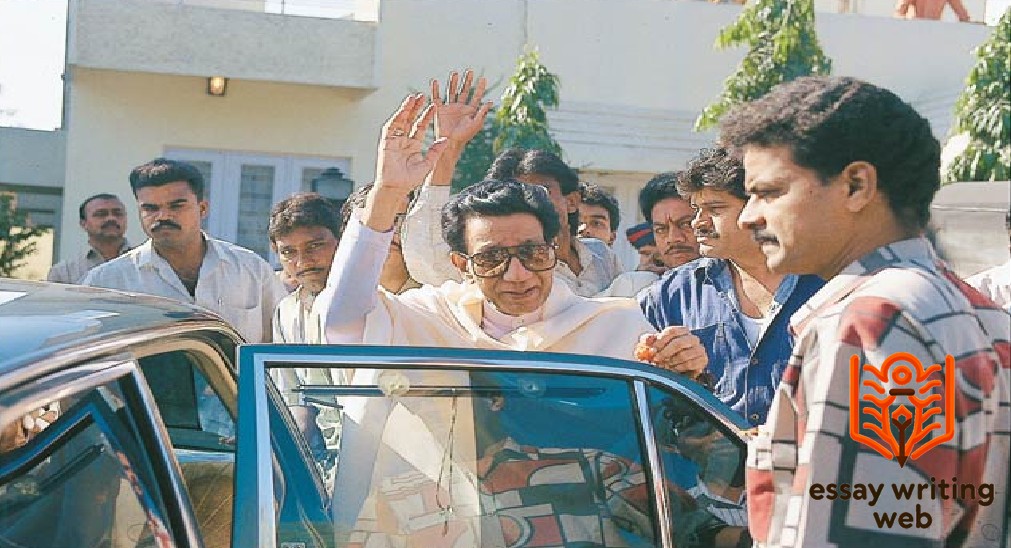 Essay Writing Web
Essay Writing Web
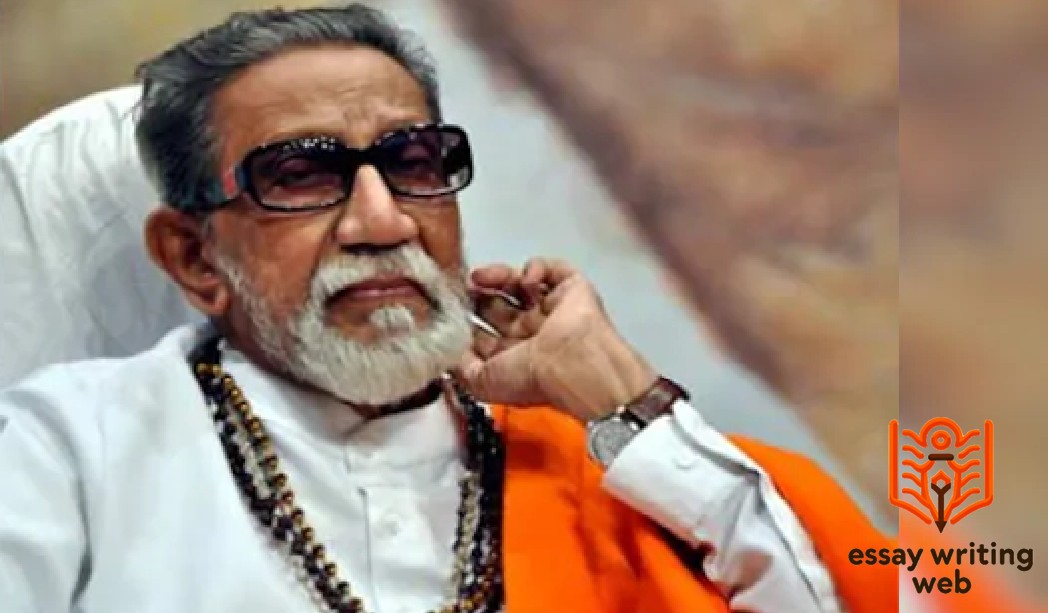
 12-09-2024
12-09-2024
 www.essaywritingweb.com
www.essaywritingweb.com
Balasaheb Thackeray, born on January 23, 1926, was a towering figure in Indian politics and a highly influential leader in Maharashtra. He founded the Shiv Sena party in 1966, a regional political movement aimed at promoting the rights and identity of the "Marathi Manoos" (Marathi people) in Mumbai and the rest of Maharashtra. Balasaheb Thackeray's leadership style was marked by his charismatic personality, sharp oratory, and strong views on regional pride and nationalism, which resonated deeply with his supporters.
Thackeray began his career as a cartoonist for the English-language newspaper The Free Press Journal, where his political cartoons gained significant attention. However, his dissatisfaction with the growing influence of non-Marathis in Mumbai led him to shift his focus toward active politics. The formation of Shiv Sena was an outcome of his vision to safeguard the interests of the Marathi community, who he felt were being marginalized in their own state due to the influx of migrants.
Over the years, Thackeray became a polarizing figure, known for his unapologetic advocacy of Hindutva and for championing the rights of the native Marathi-speaking population. His speeches, often laced with wit and sharp rhetoric, galvanized large sections of the population, particularly the youth, who saw him as a leader who fought for their cultural and economic interests. Despite controversies surrounding his methods, including accusations of divisive politics, Balasaheb's influence on the political landscape of Maharashtra was undeniable.
Thackeray's legacy remains complex, as he shaped the identity politics of Maharashtra while playing a critical role in shaping regional and national debates. He passed away on November 17, 2012, but his influence endures, particularly through the Shiv Sena and its continued role in Maharashtra's politics.
Bal Keshav Thackeray, popularly known as Balasaheb Thackeray, was born on January 23, 1926, in Pune, Maharashtra, to a family that was deeply involved in social and political causes. His father, Keshav Sitaram Thackeray, was a well-known social reformer and activist who advocated for the rights of the Marathi people and worked towards the upliftment of the lower castes in Maharashtra. Keshav Thackeray’s influence on Balasaheb was profound, shaping his ideas about regional pride and social justice from an early age.
Balasaheb grew up in a household that valued the Marathi language and culture, which played a significant role in forming his political ideology. His father’s activism and writings on social issues left a lasting impression on him, instilling a strong sense of identity and purpose. Thackeray was also influenced by his exposure to media and journalism during his early years. After completing his schooling, he started his career as a cartoonist at The Free Press Journal, where his sharp political cartoons brought him early recognition. His cartoons, often critical of politicians and social issues, reflected his ability to use humor as a tool for political commentary.
This combination of a strong regional identity, shaped by his father's activism, and his creative talents as a cartoonist laid the foundation for Thackeray's future political career. These early influences would eventually lead him to establish the Shiv Sena, a party dedicated to the cause of Maharashtra and its people.
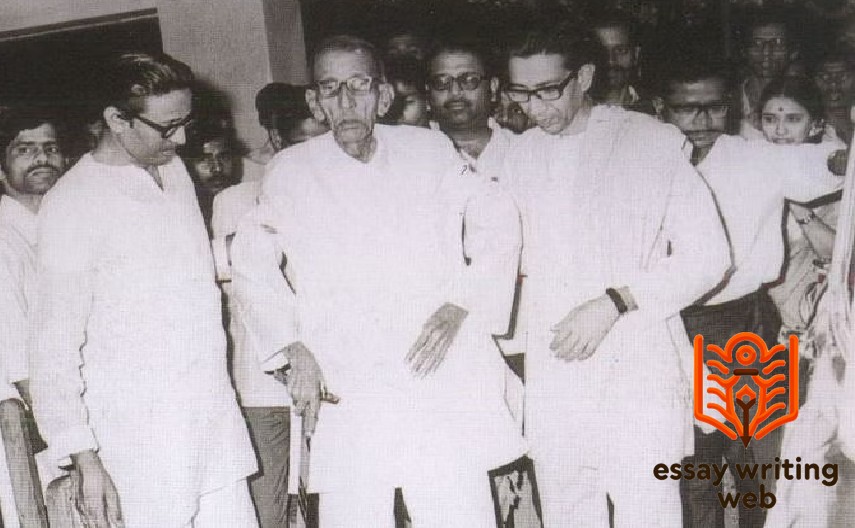
Balasaheb Thackeray, though known for his political prowess, began his professional journey as an artist. After completing his early education in Maharashtra, Thackeray developed a keen interest in drawing and journalism. While there is limited documentation on his formal higher education, his artistic talents were evident from a young age, leading him to pursue a career in cartooning, a field where he could combine his creativity with a sharp commentary on politics and society.
Thackeray started his career as a cartoonist in the early 1950s with The Free Press Journal, an English-language daily. His cartoons, often critical of the political scenario in India, gained widespread recognition for their wit, satire, and striking visual style. His ability to capture the essence of political events through humor and satire set him apart as a unique voice in Indian journalism. Thackeray’s cartoons reflected his deep understanding of the political landscape, and he used this medium to express his concerns about the growing influence of non-Marathis in Mumbai.
His cartoons were not just humorous but also carried strong political messages, highlighting the problems faced by the Marathi-speaking population. In 1960, he launched his own publication, Marmik, a Marathi weekly that provided him a platform to connect directly with the Marathi masses. Marmik played a crucial role in mobilizing support for Thackeray’s cause, and it eventually paved the way for the founding of the Shiv Sena. His early career as a cartoonist laid the foundation for his future in politics, where his sharp observations and strong opinions continued to shape his leadership.
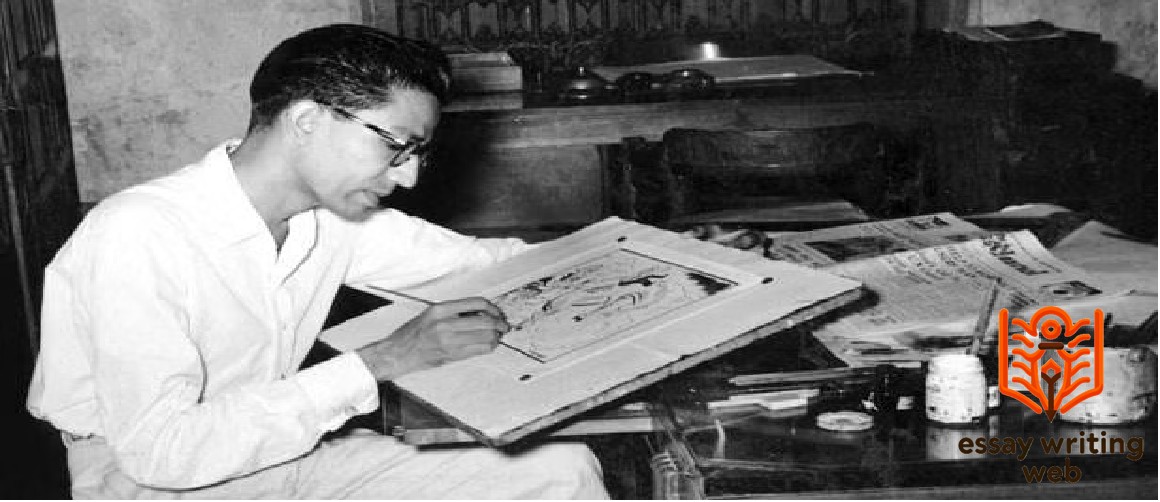
The formation of Shiv Sena in 1966 by Balasaheb Thackeray marked a pivotal moment in Maharashtra’s political landscape. Thackeray, having observed the marginalization of the Marathi-speaking population in Mumbai, sought to create a political platform that would champion the rights and interests of the "Marathi Manoos" (Marathi people). The rapid influx of migrants, especially from South India and other parts of India, into Mumbai had led to increasing competition for jobs and resources. Thackeray believed that the Marathi people, despite being the original inhabitants of the region, were being sidelined in their own city.
Shiv Sena, named after the great Maratha warrior king Chhatrapati Shivaji Maharaj, was founded with the core ideology of regional pride and the protection of Marathi culture and identity. The party's initial focus was on securing employment for the local Marathi youth, who Thackeray felt were being deprived of opportunities in their own state due to the dominance of non-Marathi communities in key sectors, particularly in Mumbai.
Shiv Sena quickly gained popularity among the working-class Marathi population, especially the youth, as it resonated with their growing frustrations. Thackeray’s fiery speeches and hard-hitting rhetoric galvanized large crowds, making Shiv Sena a powerful force in Maharashtra’s politics. Over time, the party expanded its focus beyond regionalism, adopting a strong Hindutva ideology, and becoming a significant player in both state and national politics. The formation of Shiv Sena was a reflection of Thackeray’s vision to empower the Marathi people and safeguard their interests in a rapidly changing urban landscape.
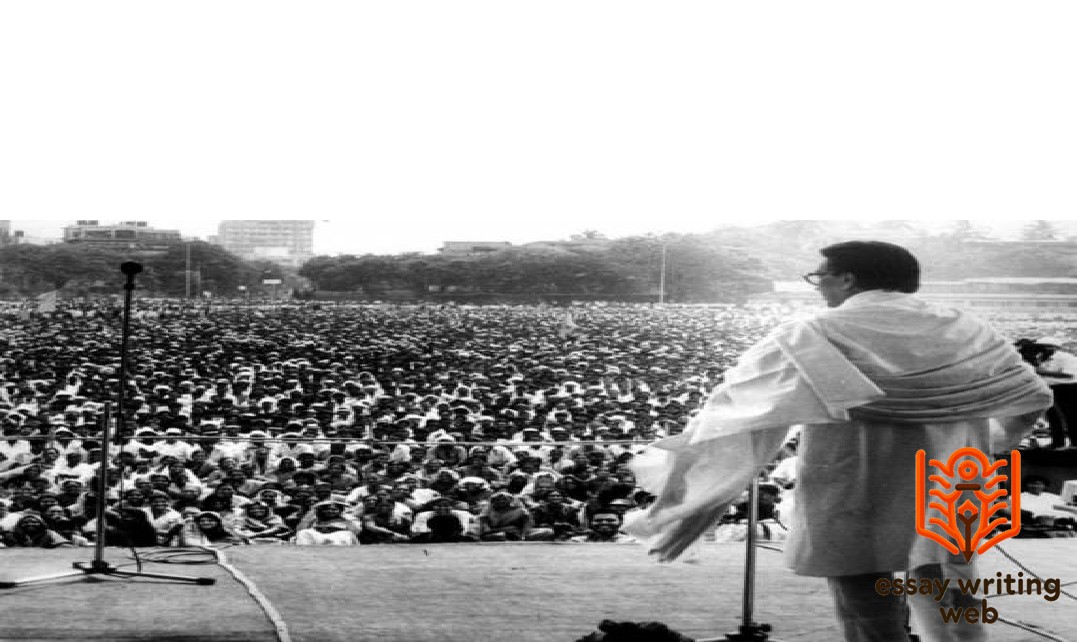
Balasaheb Thackeray founded the Shiv Sena in 1966 with a clear vision: to protect the rights, identity, and interests of the Marathi-speaking population in Maharashtra, particularly in Mumbai. Thackeray observed that the influx of migrants into Mumbai was creating competition for jobs and resources, leaving many locals marginalized. His vision was to restore the Marathi people’s prominence in their own state and ensure they had better access to employment opportunities, government positions, and a voice in the development of Maharashtra.
Thackeray's goal was to promote a sense of pride in Marathi heritage and culture, which he felt was being overshadowed by the growing influence of non-Marathi communities in the state’s economic and political sectors. Shiv Sena’s early slogan, "Mumbai for Marathis," reflected this focus on regionalism. Thackeray envisioned a Maharashtra where the local population could regain control of their political and cultural space.
In addition to regional pride, Thackeray aimed to foster a strong, united community that could resist outside economic and cultural domination. Over time, his goals expanded to include promoting Hindutva, aiming for a more unified, nationalistic identity, where the interests of Hindus and the Marathi people were safeguarded. His vision shaped Shiv Sena's evolution as a significant political force.
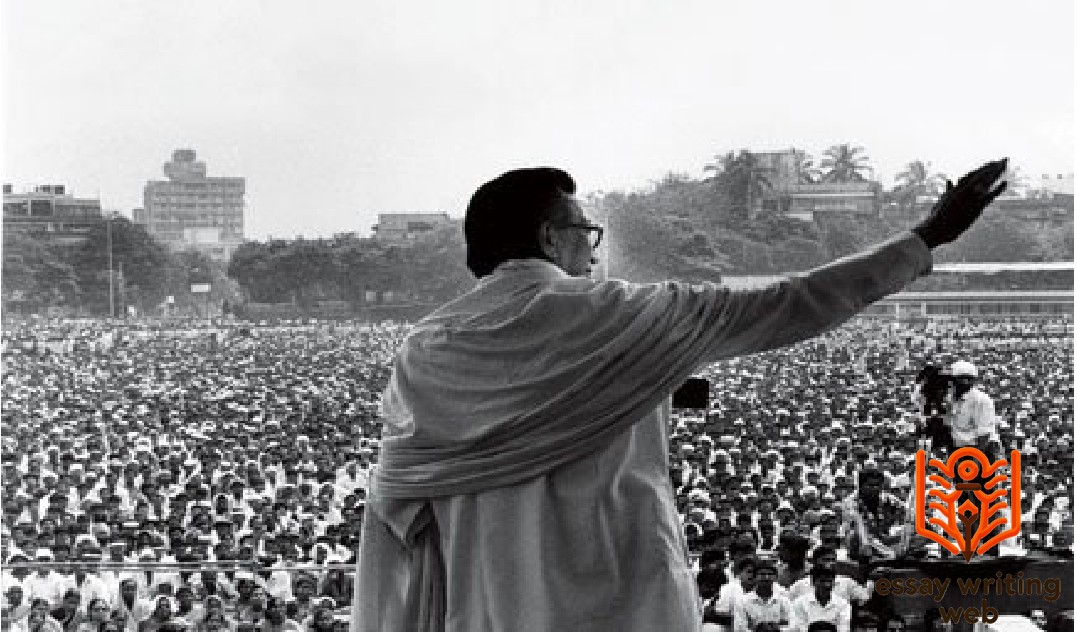
Balasaheb Thackeray's political journey was deeply rooted in the concept of regional pride, with a specific focus on the "Marathi Manoos" ideology. The term "Marathi Manoos" refers to the Marathi-speaking people of Maharashtra, whom Thackeray believed were being marginalized in their own state due to the influx of migrants, particularly in Mumbai. He saw this as a threat to the cultural and economic position of the native Marathi community, which he sought to address through the formation of Shiv Sena in 1966.
Thackeray’s focus on regional pride was not merely about protecting the language and culture of the Marathi people; it was also about ensuring that they had a fair share of employment opportunities and political representation. He believed that the jobs and resources in Maharashtra, especially in the economic hub of Mumbai, should primarily benefit the locals. The "Marathi Manoos" ideology resonated with the working class, who felt excluded from the prosperity of their own state.
This ideology became the cornerstone of Shiv Sena’s political agenda, rallying the Marathi-speaking population around issues of identity and self-respect. Thackeray’s fiery speeches and strong regional focus led to the rise of a movement that empowered the Marathi people, restoring their sense of pride and place in Maharashtra's social and political fabric.
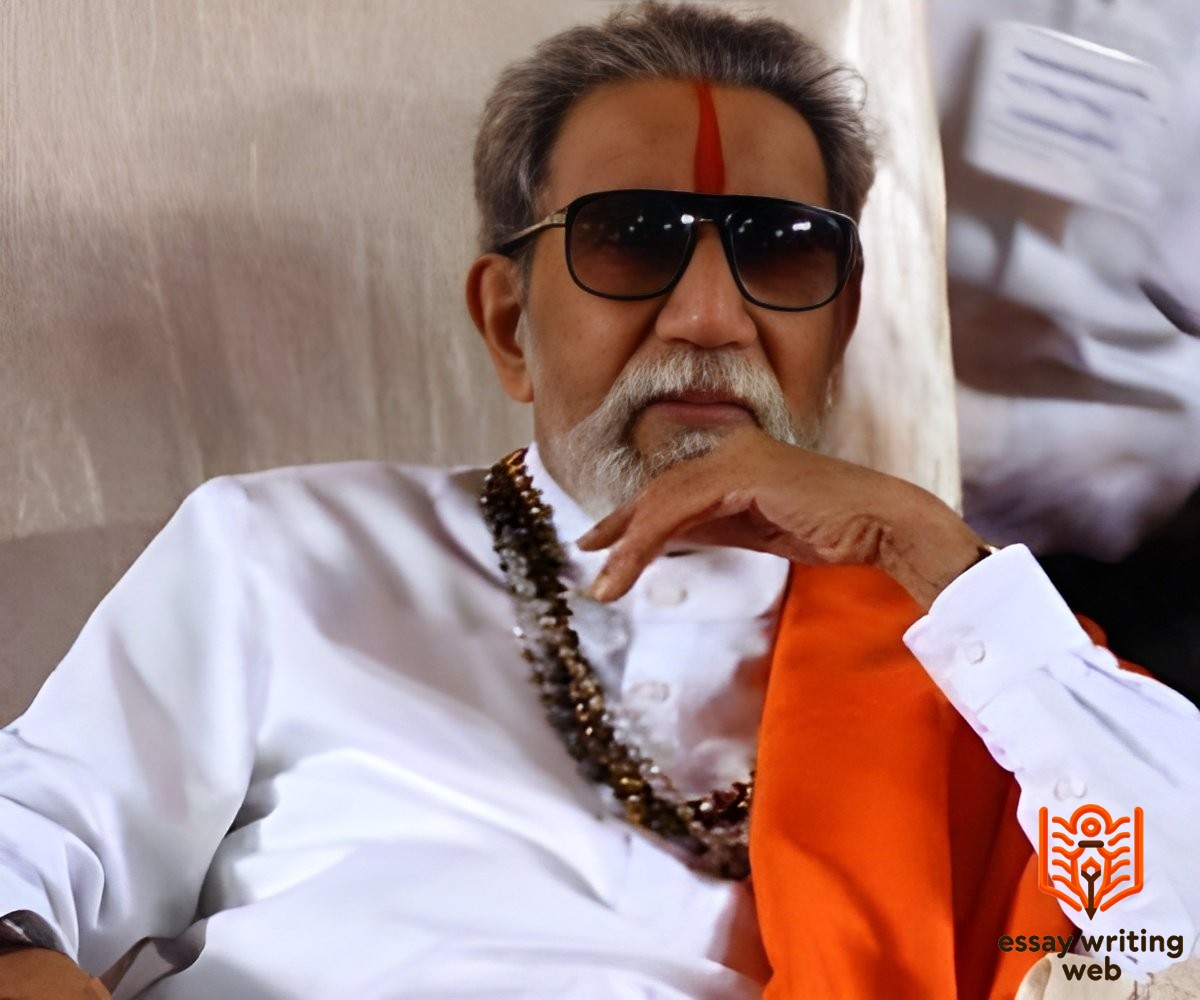
Balasaheb Thackeray's political career was marked by his uncompromising advocacy for the rights of the Marathi people and his staunch belief in Hindutva. After founding the Shiv Sena in 1966, Thackeray quickly established himself as a powerful leader, with his party focusing on regional pride and the promotion of Marathi identity. His political ideology centered around the protection of local interests, particularly in the face of growing migration to Mumbai, which he believed was threatening the cultural and economic standing of the native Marathi population.
Thackeray's politics, however, extended beyond regionalism. In the 1980s, he embraced the Hindutva ideology, aligning Shiv Sena with the broader movement of Hindu nationalism. This marked a significant shift in the party’s platform, as Thackeray positioned Shiv Sena as a defender of Hindu values and interests. His hardline stance on issues like secularism and his vocal criticism of minority appeasement policies gained him both support and controversy.
Thackeray’s political career was characterized by his fiery oratory, bold decisions, and ability to connect with the masses. His leadership made Shiv Sena a dominant force in Maharashtra politics, and his influence extended to the national level, leaving a lasting impact on both regional and Hindu nationalist politics in India.
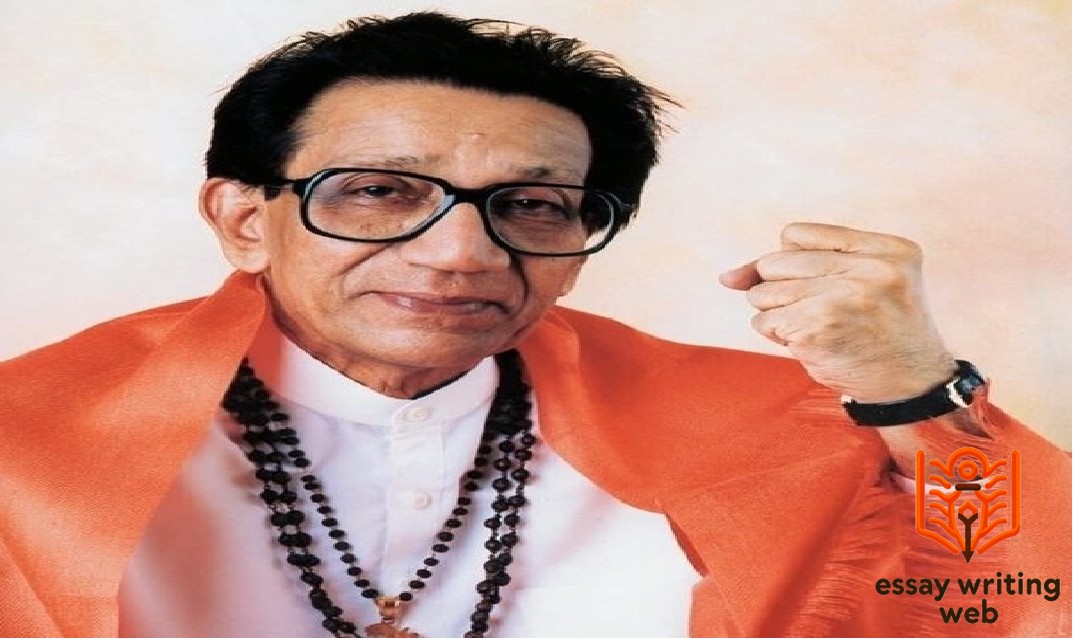
Balasaheb Thackeray played a pivotal role in shaping Maharashtra's political landscape, especially through his regionalist agenda focused on protecting the interests of the local Marathi-speaking population. As the founder of Shiv Sena in 1966, Thackeray's political vision was driven by the belief that Maharashtrians were being marginalized in their own state, particularly in Mumbai, due to the influx of migrants. His leadership gave voice to the frustrations of the Marathi working class, making regional pride a central issue in the state’s politics.
Thackeray’s approach was distinct in that he combined street-level activism with strong political rhetoric. Shiv Sena, under his leadership, engaged in protests, strikes, and demonstrations aimed at securing jobs and opportunities for the Marathi population. This focus on regional issues resonated deeply with many in Maharashtra, particularly the youth, allowing Shiv Sena to gain significant political ground.
Thackeray’s influence extended beyond just regionalism, as he embraced Hindutva ideology in the 1980s, aligning Shiv Sena with Hindu nationalist movements. His party became a formidable force in Maharashtra’s politics, regularly forming alliances with the Bharatiya Janata Party (BJP) to contest elections. Through Shiv Sena, Thackeray not only transformed Maharashtra’s political dynamics but also left an enduring legacy of regionalism and nationalism intertwined in the state’s politics.
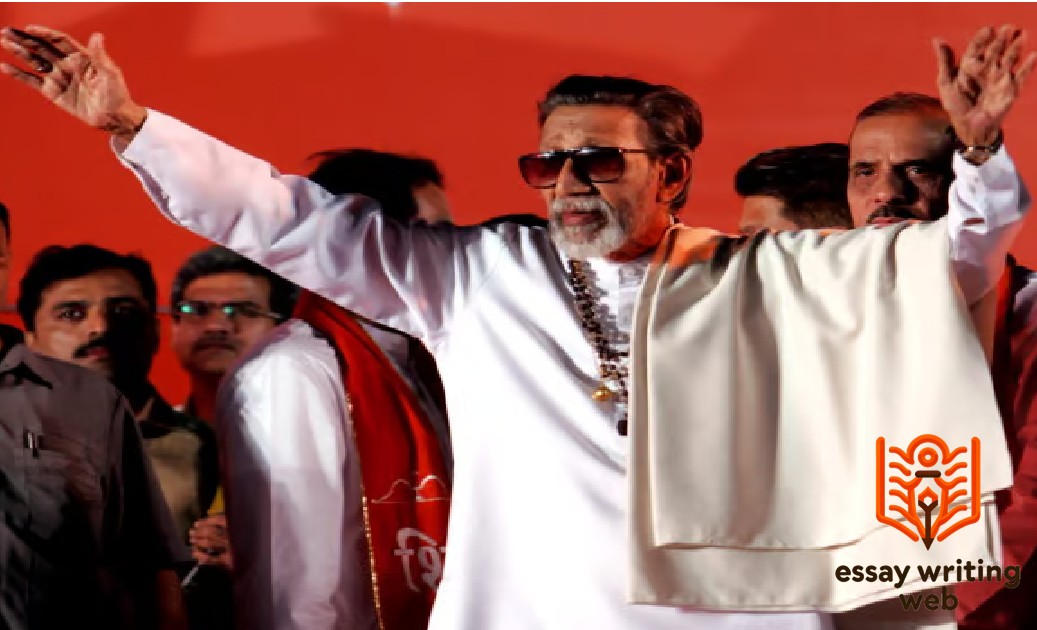
Balasaheb Thackeray played a significant role in the rise of Hindutva ideology in India, particularly through his political party, Shiv Sena. While the party was initially founded to address the concerns of the Marathi-speaking population, by the 1980s, Thackeray had aligned Shiv Sena with the broader Hindutva movement, which advocated for the promotion of Hindu values and identity across the nation.
Thackeray’s embrace of Hindutva was a strategic shift that helped broaden Shiv Sena’s influence beyond regional politics. He positioned himself and his party as defenders of Hinduism, often taking a hardline stance on issues related to secularism and minority appeasement. Thackeray’s rhetoric, particularly his strong opposition to policies that he believed undermined Hindu interests, resonated with a large section of the population that felt neglected by the government.
By aligning with the Bharatiya Janata Party (BJP), Thackeray solidified Shiv Sena’s role in the national Hindutva movement. This partnership helped bring Hindutva to the forefront of Indian politics, leading to the consolidation of Hindu nationalist sentiments across various states. Thackeray’s fiery speeches and bold actions contributed to the rise of Hindutva as a significant political force in India, influencing the country’s political discourse and shaping its future.
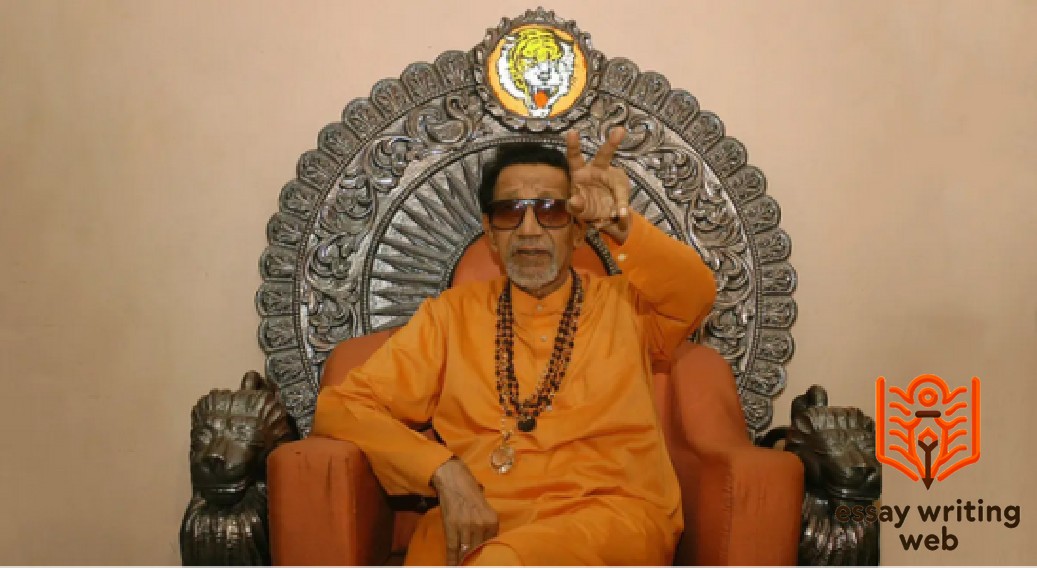
Balasaheb Thackeray maintained a complex and dynamic relationship with other political parties and leaders throughout his career. As the founder of Shiv Sena, his primary focus was on advocating for the rights of the Marathi people and promoting Hindutva ideology, which often put him at odds with national and regional parties. However, his pragmatic approach to politics allowed him to form strategic alliances when necessary, demonstrating his keen political acumen.
One of Thackeray’s most notable political partnerships was with the Bharatiya Janata Party (BJP). Sharing a common Hindutva ideology, Shiv Sena and BJP formed an alliance that played a critical role in Maharashtra’s politics. This partnership extended to the national level, with the two parties working together in both state and central governments. Despite occasional differences, Thackeray’s strong relationship with BJP leaders like Atal Bihari Vajpayee and L. K. Advani was crucial to the success of this alliance.
Thackeray also maintained a unique relationship with the Congress party, especially during Indira Gandhi's tenure as Prime Minister. Though ideologically opposed to Congress, Thackeray’s influence and power in Maharashtra meant that Congress leaders often sought his support or avoided direct confrontations with him. He had a more antagonistic relationship with left-wing and regional parties, as their agendas often conflicted with Shiv Sena’s core ideologies.
Overall, Balasaheb Thackeray’s relationships with other political leaders and parties were marked by both collaboration and conflict, depending on the political landscape. His ability to navigate these dynamics made him a formidable and influential leader in Indian politics.
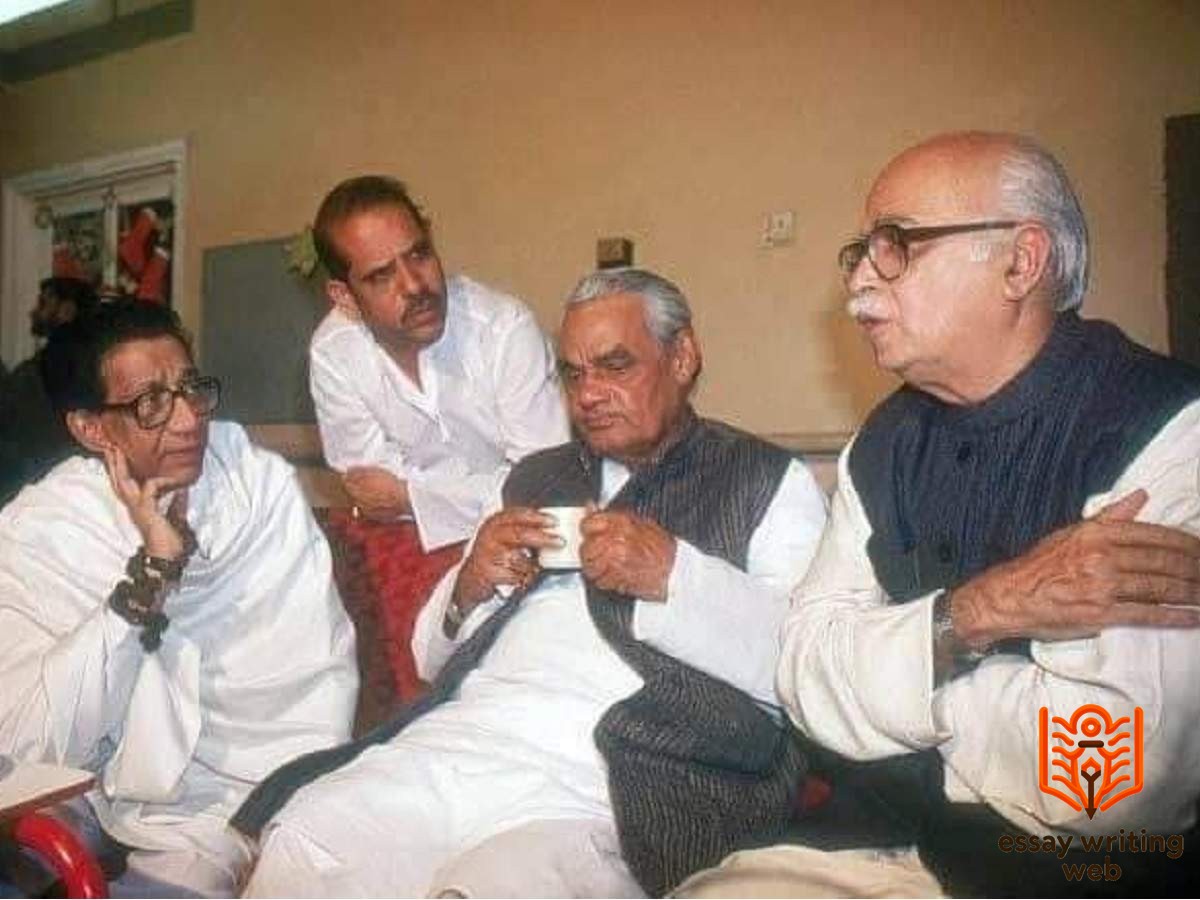
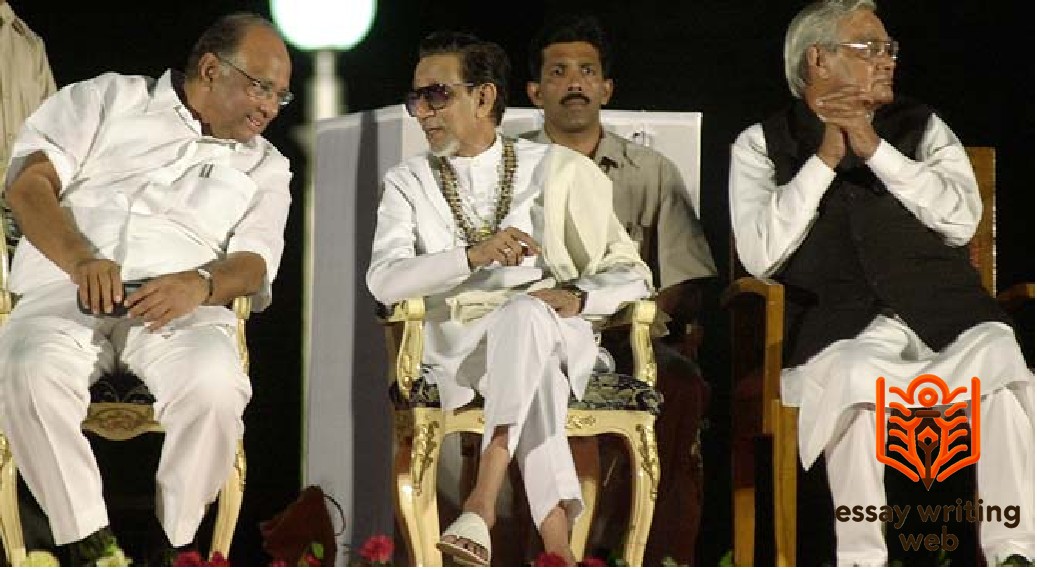
Balasaheb Thackeray was a leader with a unique and charismatic leadership style that earned him widespread popularity, particularly in Maharashtra. His approach was characterized by his strong, unfiltered rhetoric and his ability to connect with the common people. Thackeray’s leadership was built on a foundation of direct communication with his followers, often using his oratory skills to deliver impassioned speeches that resonated with the frustrations and aspirations of the Marathi population. His speeches, filled with humor, wit, and sharp political commentary, galvanized massive crowds, especially among the youth.
Thackeray’s popularity stemmed from his ability to articulate the concerns of the local Marathi people, who felt marginalized in their own state. His focus on regional pride, coupled with his later adoption of the Hindutva ideology, further solidified his appeal among a broad spectrum of supporters. His newspaper Saamana, which he used as a platform for expressing his views, also played a key role in amplifying his influence.
Though his leadership style was often confrontational, Thackeray was seen as a protector of his people. He commanded loyalty through a mixture of charisma, fearlessness, and a clear vision for his followers. This combination of traits made him an enduring figure in Maharashtra’s politics and ensured his lasting legacy as a powerful and influential leader.
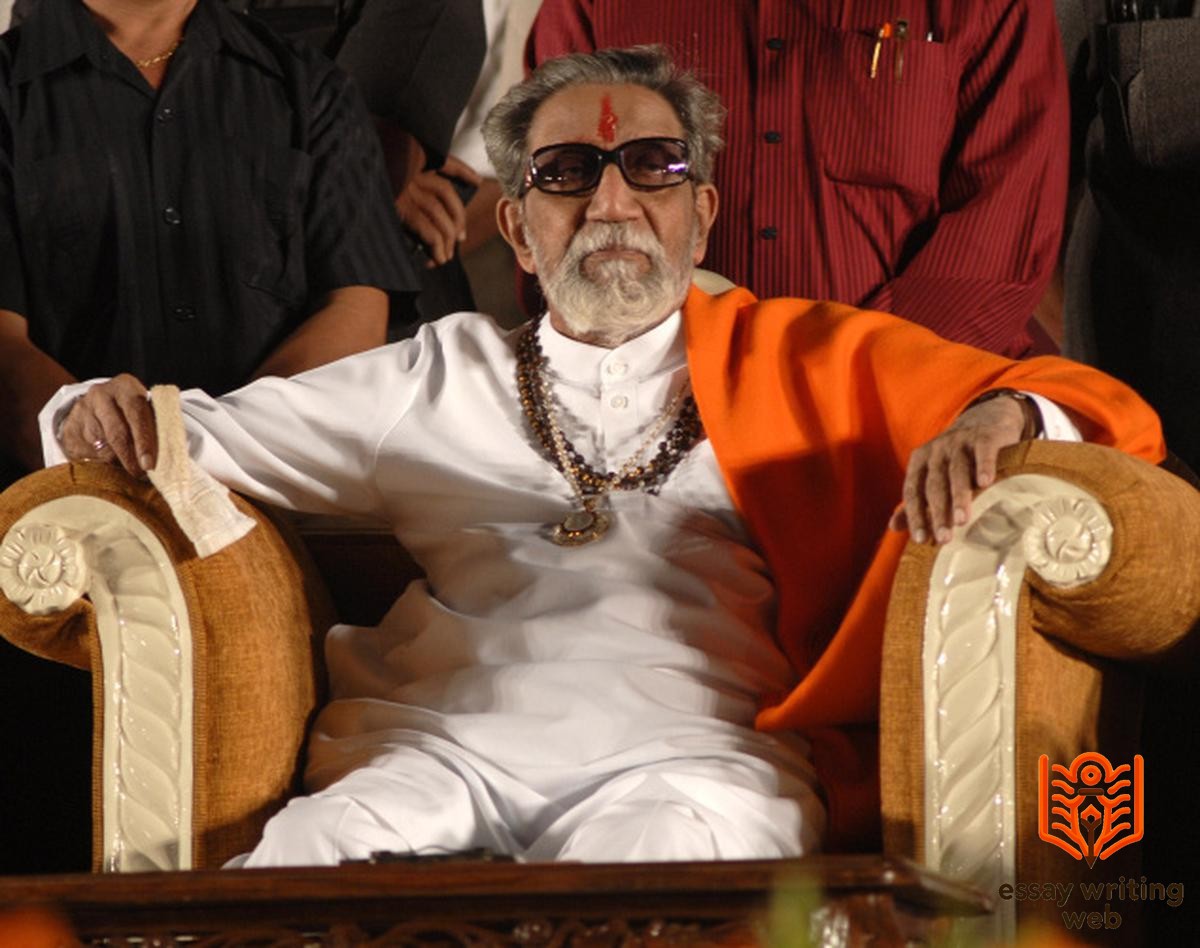
Balasaheb Thackeray's astute use of media, especially through his newspaper Saamana, played a pivotal role in shaping his political influence and communicating his ideologies. Launched in 1989, Saamana became Thackeray’s primary platform for expressing his views on a wide range of political, social, and cultural issues. As the editor-in-chief, Thackeray used the newspaper to articulate the Shiv Sena's stance on various topics, criticize opponents, and rally support for his causes.
Saamana was known for its bold and often provocative content, with Thackeray using it to address issues that resonated with his Marathi-speaking audience, particularly around regional pride, the promotion of Hindutva, and the protection of Marathi identity. His editorials, written in his distinctive and sharp style, often targeted political rivals, government policies, and societal trends that he believed were undermining the interests of the Marathi people.
The newspaper also served as a tool for mass mobilization, as it reached a wide readership across Maharashtra, influencing public opinion and reinforcing the Shiv Sena’s political narrative. Thackeray’s use of Saamana reflected his understanding of media's power in shaping public discourse. By controlling his own media outlet, he was able to directly communicate with his supporters, bypassing traditional media channels and amplifying his message without filters.

Balasaheb Thackeray's political career was marked by numerous controversies, largely stemming from his unapologetic rhetoric and hardline positions. One of the most significant controversies surrounded his aggressive stance on the rights of the "Marathi Manoos." Thackeray’s Shiv Sena targeted non-Marathi communities, particularly South Indians and later North Indians, accusing them of taking away jobs and opportunities from locals in Maharashtra. This led to violent clashes and accusations of divisive, xenophobic politics.
Another major controversy involved Thackeray's embrace of Hindutva ideology. His outspoken support for Hindu nationalism drew both admiration and criticism. His provocative remarks against Muslims, particularly during the communal tensions of the 1990s, further fueled controversy. The Shiv Sena was accused of instigating violence during the 1992-1993 Mumbai riots following the Babri Masjid demolition, with Thackeray’s speeches being seen as inflammatory.
Thackeray was also criticized for advocating strong-arm tactics and vigilantism. His calls for Shiv Sena workers to take direct action often led to violence, such as during the agitation against Valentine’s Day celebrations, which he condemned as an erosion of Indian culture.
Despite these controversies, Thackeray’s followers admired his boldness, while critics accused him of promoting sectarian and divisive politics. His career remained polarizing, marked by both staunch loyalty and severe criticism.

Balasaheb Thackeray’s legacy in Maharashtra and Indian politics remains both influential and complex. As the founder of Shiv Sena, Thackeray transformed the political landscape of Maharashtra by giving voice to the concerns of the Marathi people. His commitment to regional pride and the rights of the "Marathi Manoos" left a lasting impact on the state’s politics, redefining how local identity and regionalism could be harnessed as powerful political forces. His role in shaping Maharashtra’s political consciousness continues to be felt, particularly through Shiv Sena’s enduring presence in the state’s government.
Beyond regionalism, Thackeray’s adoption of the Hindutva ideology extended his influence to the national stage. He played a significant role in the rise of Hindu nationalism in India, aligning Shiv Sena with the Bharatiya Janata Party (BJP) and helping consolidate the Hindutva movement. This alliance not only strengthened his party’s position in Maharashtra but also contributed to the larger political shift towards Hindu nationalism in India.
Thackeray’s leadership style, marked by bold rhetoric and direct communication, made him a charismatic and polarizing figure. While admired by many for his fierce defense of Marathi and Hindu identity, his controversial stances on minorities and migration also drew significant criticism. Nonetheless, his legacy is deeply embedded in Maharashtra’s political culture and continues to shape both regional and national politics.
